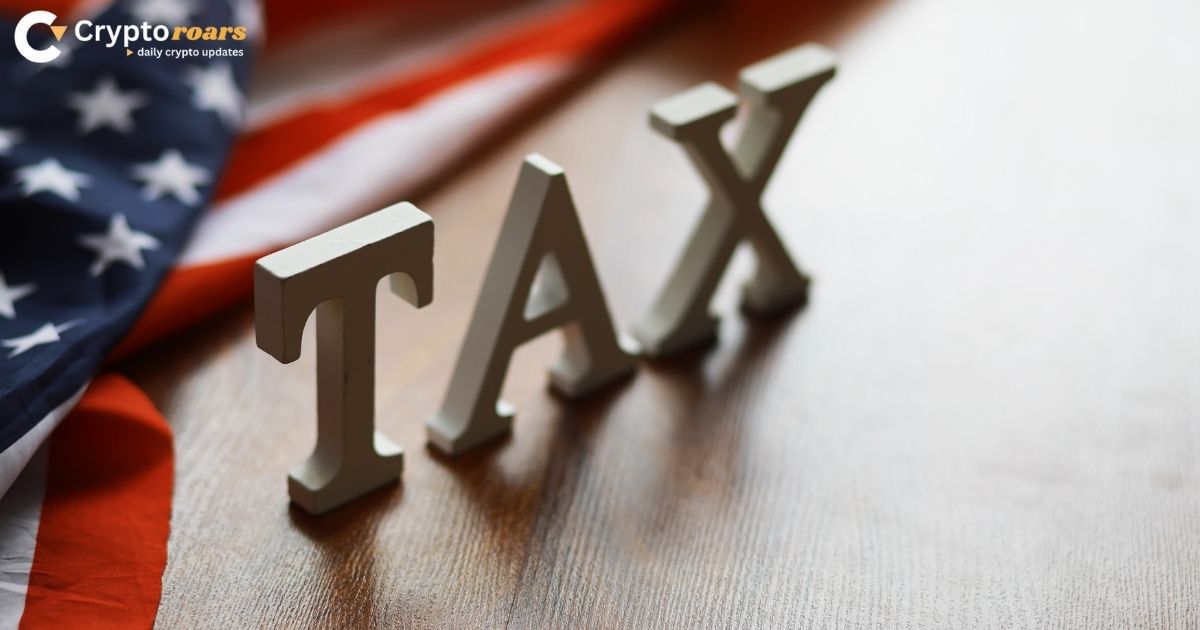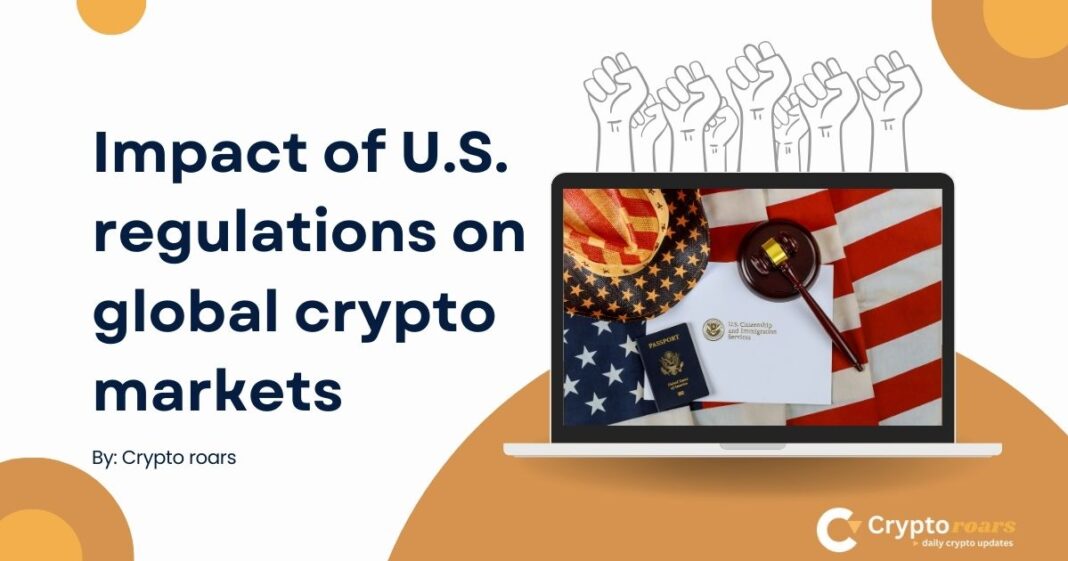The crypto industry is facing a defining year in 2025. The United States, through a mixture of U.S. crypto laws 2025, enforcement actions, and policy debates, is reshaping how digital assets are created, traded, and taxed. Investors, businesses, and regulators around the world are watching closely because the impact of U.S. regulations on global crypto markets is both immediate and far-reaching. From SEC crypto regulation to CFTC oversight of digital assets, every move creates ripple effects that affect liquidity, adoption, and innovation across borders. This article explains the main trends, laws, and implications of U.S. crypto regulation 2025, while comparing them with global approaches and highlighting how these changes influence businesses, investors, and long-term adoption.
Key Regulatory Developments in 2025
The year 2025 has seen sweeping developments in U.S. crypto laws 2025. The government has launched a Crypto Task Force 2025 to coordinate regulatory efforts, combining input from the Securities and Exchange Commission (SEC), the Commodity Futures Trading Commission (CFTC), the Treasury Department, and the IRS. New frameworks for crypto taxation rules, stablecoin regulation 2025, and decentralized finance (DeFi) regulation are shaping compliance across the market.
A major shift comes from the Biden administration’s executive order on digital financial technology, which instructs agencies to focus on investor protection in crypto, systemic risks, and the innovation vs. overregulation debate. This aligns with international calls for harmonization of crypto laws, but U.S. policies remain stricter than those in the MiCA framework of Europe or the Singapore crypto sandbox.
SEC’s Stance on Crypto Assets
The Securities and Exchange Commission (SEC) continues to argue that most tokens qualify as securities under token classification and disclosure rules. Through cases like the Coinbase enforcement case, the SEC enforces its belief that trading platforms must register and meet operational transparency in crypto markets.
Chair Gary Gensler emphasizes that investor protection in crypto is the priority, meaning stricter oversight of ICOs, lending platforms, and exchange operations. At the same time, the SEC is refining SAB 121 and SAB 122, guidance that directly affects how banks and custodians account for crypto custody rules.
CFTC’s Role in Regulating Digital Assets
The Commodity Futures Trading Commission (CFTC) has expanded its CFTC oversight of digital assets, focusing on futures, swaps, and derivatives. Its role is crucial for derivatives and futures regulation, which determines how institutions can hedge crypto risks.
In 2025, the CFTC collaborates with the SEC but also competes for jurisdiction. The CFTC’s focus on commodity classification of cryptocurrencies and its control over spot Bitcoin and Ether products strengthens the market. Analysts note that this dual oversight may cause complexity, but it also provides stronger crypto compliance standards for large players.
Stablecoin Legislation and Compliance Rules
Stablecoins are now central to both U.S. and global markets. New stablecoin regulation 2025 requires full transparency and reserve management in stablecoins, with issuers publishing daily reports.
Payment firms like PayPal and Circle must comply with anti-money laundering (AML) compliance and know-your-customer (KYC) protocols. The U.S. also rejected proposals for a central bank digital currency (CBDC) ban, signaling instead that regulated stablecoins could act as safer alternatives for cross-border payments with stablecoins.
Crypto Tax Implications for Investors

The IRS has tightened IRS cryptocurrency reporting requirements. Investors must now report all digital asset transactions over $600, and crypto taxation rules include new guidelines for staking and lending rewards.
For example, the IRS has introduced a clear system distinguishing between short-term and long-term capital gains. This reduces confusion but increases compliance costs. A comparison table shows how taxation differs across countries:
| Country | Tax Rate on Crypto | Reporting Threshold |
| U.S. | 10%–37% | $600 |
| UK | 10%–20% | £1,000 |
| Germany | 0% after 1 year | €600 |
State vs. Federal Crypto Laws
A key challenge is the conflict between state vs. federal crypto laws. States like Wyoming offer crypto-friendly legislation, while New York enforces strict licensing regimes through the BitLicense.
This patchwork creates confusion for businesses and investors. Calls for uniformity are growing as the lack of clarity hinders blockchain adoption and regulation. The federal government is now considering preemption measures to standardize rules nationwide.
Impact on Businesses and Investors
The impact of U.S. regulations on global crypto markets is strongly felt by businesses and investors. Firms face rising costs due to crypto compliance standards, but they also gain legitimacy in global finance.
Investors benefit from clearer rules on financial privacy and individual autonomy, yet some worry about excessive monitoring. This tension highlights the innovation vs. overregulation debate, where striking the right balance will decide the industry’s future.
Crypto Exchanges, DeFi Protocols, and Custodians
Exchanges must now follow crypto custody rules that enforce strict separation of customer and company assets. The Binance lawsuit pause in 2025 showed how regulators are demanding greater operational transparency in crypto markets.
DeFi regulation is becoming a reality as protocols face registration requirements and KYC checks. The Cyber and Emerging Technologies Unit (CETU) is tasked with monitoring decentralized platforms for fraud and manipulation.
Institutional Adoption of Regulated Crypto Products
Institutional adoption is accelerating under regulated conditions. Hedge funds and pension funds are expanding into institutional funds in digital assets, helped by the Crypto ETFs approval process.
Wall Street firms are pushing for more clarity on SAB 121 and SAB 122, which shape how banks handle custody. As these barriers fall, institutional adoption of crypto will only grow, making digital assets part of mainstream portfolios.
Stablecoin Issuers and Payment Companies
Stablecoin issuers like Circle, Tether, and PayPal face stricter compliance under Stablecoin Regulation 2025. The U.S. requires regular audits and reserve disclosures, forcing these companies to adopt new operational transparency in crypto market practices.
Payment firms are now central to U.S. strategy in global finance. By tying stablecoins to the dollar, regulators aim to reinforce the role of the U.S. in cross-border payments with stablecoins, ensuring long-term dollar dominance.
The Role of the SEC in Shaping Crypto
The SEC crypto regulation framework has shaped the industry more than any other agency. With its power over token classification and disclosure, the SEC sets the tone for innovation and compliance.
Cases such as the Coinbase enforcement case demonstrate how the SEC uses enforcement actions vs. structured compliance to guide the market. This approach has raised concerns about stifling startups, yet it secures greater investor confidence.
Investor Protection and Market Integrity
The SEC’s mission centers on investor protection in crypto. This includes targeting scams, false advertising, and improper reserve disclosures. Regulators argue that trust is vital for adoption.
However, critics argue that excessive oversight undermines financial privacy and individual autonomy. Finding a balance between transparency and freedom will decide whether the U.S. leads in crypto innovation or loses ground to global competitors.
Legitimacy, Adoption, and Regulatory Clarity
Regulatory clarity enhances legitimacy. For instance, the Crypto ETFs approval process in 2025 has encouraged banks to expand into custody services. This brings digital assets closer to mainstream finance.
Adoption grows as institutions see stronger crypto compliance standards. Still, the innovation vs. overregulation debate continues, with some fearing that too much control may suppress innovation in blockchain technology.
The Howey Test and Its Application to Crypto
The Howey Test remains the key tool for determining whether a digital asset is a security. In practice, most tokens are captured under token classification and disclosure requirements.
Critics say this outdated test limits innovation. However, courts continue to support its use, arguing that investor protection requires consistency in how the law is applied to crypto assets.
Recent SEC Enforcement Actions and Scandals
High-profile cases such as the Coinbase enforcement case and the Binance lawsuit pause show the SEC’s aggressive stance. These cases reveal the growing role of enforcement actions vs. structured compliance in setting industry norms.
The SEC also faced criticism for mishandling earlier cases, raising concerns about fairness. Yet, its Cyber and Emerging Technologies Unit (CETU) continues to expand oversight, leaving no major exchange unchecked.
The Role of the CFTC in Crypto Markets
The Commodity Futures Trading Commission (CFTC) plays a complementary role, ensuring that derivatives and futures regulation is fair and transparent. This oversight is essential for institutions hedging risks.
Its approval of more regulated futures and ETFs in 2025 strengthens U.S. leadership. The CFTC’s growing role ensures that crypto remains part of mainstream finance, balancing innovation with stability.
Commodity Classification of Cryptocurrencies
In 2025, Bitcoin and Ethereum remain classified as commodities under CFTC oversight of digital assets. This classification allows for derivatives and futures regulation under CFTC rules.
This distinction creates clarity but also raises tensions with the SEC, which views some tokens differently. The lack of harmony between agencies contributes to legal uncertainty, even as markets demand clearer crypto compliance standards.
Regulation of Derivatives, Futures, and Spot Products
The U.S. has advanced its Crypto ETFs approval process, with spot Bitcoin ETFs finally gaining traction. Futures products remain the most widely traded under derivatives and futures regulation.
Institutions welcome these moves because they bring liquidity and reduce risk. However, the market continues to call for expanded spot approvals across multiple tokens.
Impact of U.S. Regulations on Global Crypto Markets
The impact of U.S. regulations on global crypto markets cannot be overstated. Every new enforcement action or policy change influences liquidity, capital flows, and innovation worldwide.
For example, stricter U.S. laws encourage some companies to relocate to regions like Singapore or Dubai, fueling regulatory arbitrage. Others stay because U.S. compliance provides credibility. The result is both fragmentation and global adaptation.
Liquidity, Listings, and Price Volatility
Regulation influences liquidity, listings, and price volatility across markets. When the SEC blocks a token, exchanges delist it globally, affecting investor sentiment.
Liquidity improves when new Crypto ETFs approval process rules allow greater institutional participation. At the same time, strict crypto compliance standards reduce speculative volatility but may slow growth.
Stablecoins as Dollar-Denominated Global Assets
The role of stablecoins is expanding. With stronger stablecoin regulation 2025, they serve as safe instruments for global transactions. This reinforces the dollar’s dominance.
Stablecoins regulated by the U.S. also impact emerging economies, where they are used for remittances and cross-border payments with stablecoins. Their regulation ensures stability but limits the growth of unregulated tokens.
Regulatory Arbitrage and Offshore Market Growth
Not all players welcome strict U.S. laws. Many startups relocate to friendlier jurisdictions like the Singapore crypto sandbox or the Japanese crypto licensing regime. This reflects regulatory arbitrage at work.
While offshore growth accelerates, it creates risks of fraud and weak oversight. This tension demonstrates the global crypto market impact of American rules, where stricter domestic policies push risk abroad.
Comparison to Europe’s MiCA and Asia’s Approach
The MiCA framework Europe provides uniform rules across the EU, offering a contrast to state vs. federal crypto laws in the U.S. Europe’s approach is often seen as more innovation-friendly.
In Asia, Japan’s crypto licensing regime and Singapore’s crypto sandbox balance innovation with regulation. Compared to these, the U.S. appears stricter, though its influence remains unmatched globally.
Institutional Finance and Crypto Integration
Wall Street continues to push deeper into crypto through institutional funds in digital assets. The approval of spot ETFs has legitimized digital assets for pensions and insurance companies.
Banks, encouraged by crypto custody rules, are entering the market more aggressively. This signals a long-term integration of crypto into mainstream finance, driven by regulatory clarity.
ETFs, Custody Rules, and Banking Participation
The Crypto ETFs approval process is unlocking demand from retail and institutional investors alike. Custody has become a competitive space, with banks complying with SAB 121 and SAB 122.
This banking participation ensures safe custody and better crypto compliance standards, bridging the gap between traditional finance and the digital asset sector.
AML/KYC Standards and Compliance Requirements
The U.S. insists on strong know-your-customer (KYC) protocols and anti-money laundering (AML) compliance. DeFi platforms must now integrate identity checks, which marks a significant change in the industry.
These standards support operational transparency in crypto markets, but they also spark debate about financial privacy and individual autonomy. Balancing security with privacy remains a central challenge.
Academic & Research Insights
Scholars are analyzing the global crypto market impact of U.S. regulation. Studies using event-study models on regulation announcements show how crypto prices react within hours of major policy shifts.
Research also highlights long-term benefits such as reduced fraud and improved investor trust. Still, critics warn that too much regulation could slow blockchain adoption and regulation globally.
Regulation Spillovers Across Crypto Markets
The impact of U.S. regulations on global crypto markets extends far beyond American borders. Countries in Latin America and Africa adopt stricter rules after U.S. announcements.
This spillover effect influences liquidity, innovation, and investor sentiment globally. As U.S. compliance strengthens, other countries either harmonize their frameworks or exploit gaps through regulatory arbitrage.
Event-Study Models on Regulation Announcements
Event studies reveal short-term volatility around major enforcement cases like the Coinbase enforcement case. The immediate reaction is often negative, with prices dropping.
However, long-term studies show that markets stabilize as rules provide certainty. This demonstrates the difference between initial panic and sustained growth under regulation.
Short-Term vs Long-Term Market Impacts

Short-term impacts of U.S. crypto laws 2025 include sudden sell-offs, delistings, and reduced liquidity. For example, the Binance lawsuit pause created uncertainty for weeks.
Long-term, however, adoption increases as investors trust a more regulated market. The U.S. aims to strike a balance, but the outcome of this innovation vs. overregulation debate remains uncertain.
Future Outlook & Industry Reactions
The industry expects more integration between traditional finance and digital assets. Companies predict greater institutional adoption of crypto once compliance becomes standardized.
Yet, startups warn that stricter crypto compliance standards may drive innovation abroad. The global crypto market impact will depend on how harmonization unfolds internationally.
Innovation vs. Overregulation Debate
The innovation vs. overregulation debate is the heart of the discussion. Supporters argue that rules protect investors and build trust. Critics fear suffocating innovation.
If the U.S. tips too far, it may lose leadership to regions like Singapore or Europe. Still, clarity has already boosted institutional funds in digital assets, showing that smart regulation can drive adoption.
Global Harmonization or Fragmentation of Rules
The future may bring harmonization of crypto laws, where the U.S., Europe, and Asia align on standards. This would reduce compliance costs and encourage global trade.
Alternatively, rules may fragment, forcing companies to adapt to dozens of frameworks. Such fragmentation increases costs and weakens the global crypto market impact of American leadership.
Conclusion
The impact of U.S. regulations on global crypto markets is undeniable in 2025. From SEC crypto regulation to CFTC oversight of digital assets, every move reshapes liquidity, adoption, and innovation. Stablecoins, taxation, and enforcement cases set the tone for global trends.
While the innovation vs. overregulation debate continues, it is clear that the U.S. will remain a central force in shaping the future of digital assets. The challenge now is to balance investor protection, innovation, and global leadership without stifling growth.
FAQs on U.S. Crypto Regulation 2025
What is U.S. crypto regulation in 2025?
U.S. crypto regulation in 2025 refers to the updated legal and compliance framework designed to manage cryptocurrencies, stablecoins, and digital assets within the United States. These rules involve the Securities and Exchange Commission (SEC) and the Commodity Futures Trading Commission (CFTC), both working to ensure investor safety, market integrity, and transparent operations across exchanges and DeFi platforms.
Why is U.S. crypto regulation important for investors?
For investors, U.S. crypto regulation provides clearer guidelines that reduce uncertainty in the market. When agencies define what counts as a security or commodity, investors can make decisions with more confidence. With structured rules on taxation, custody, and disclosures, U.S. crypto regulation protects portfolios while encouraging long-term adoption.
How does U.S. crypto regulation affect stablecoins?
Stablecoins are directly impacted by U.S. crypto regulation since lawmakers introduced strict rules on transparency and reserve management. Issuers must follow compliance frameworks that make these tokens more reliable for payments and cross-border transfers. These new stablecoin regulation 2025 policies ensure that users and institutions can trust the value backing digital dollars.
What role does the SEC play in U.S. crypto regulation?
The Securities and Exchange Commission (SEC) plays a leading role in shaping U.S. crypto regulation. It oversees token classification, enforces investor protection measures, and regulates exchanges offering securities-like products. Recent enforcement cases against major platforms highlight how central the SEC’s role is in U.S. crypto regulation.
Does U.S. crypto regulation cover taxation?
Yes, U.S. crypto regulation includes updated crypto taxation rules and stricter IRS cryptocurrency reporting obligations. Investors must disclose gains, losses, and cross-border transactions. By tightening tax compliance, U.S. crypto regulation aims to reduce evasion and create a fairer digital asset economy.
How does U.S. crypto regulation impact global markets?
The impact of U.S. regulations on global crypto markets is massive because the U.S. sets trends for other regions. When America introduces strict or flexible policies, it affects liquidity, listings, and international trading volumes. Countries like those in Europe with the MiCA framework or Asia with Japan’s crypto licensing often adjust based on how U.S. crypto regulation evolves.
What businesses are most affected by U.S. crypto regulation?
Crypto exchanges, custodians, and payment firms are at the center of U.S. crypto regulation. DeFi protocols are also under scrutiny for compliance with KYC protocols and AML rules. By enforcing operational transparency, U.S. crypto regulation directly affects how these businesses grow and adapt.
How should investors prepare for U.S. crypto regulation changes?
Investors should keep track of new announcements, follow reliable compliance standards, and work with tax professionals familiar with U.S. crypto regulation. Diversifying portfolios, using regulated exchanges, and maintaining accurate records are smart ways to stay ahead of evolving laws.
Will U.S. crypto regulation encourage institutional adoption?
Yes, U.S. crypto regulation is making institutional adoption easier. Clearer rules for custody, ETFs, and stablecoins help banks and funds invest safely. By addressing risks and offering legal clarity, U.S. crypto regulation paves the way for more mainstream financial integration.
For more information, keep visiting cryptoroars.com


